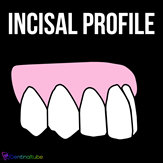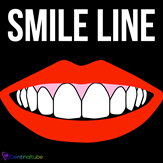The next 9 posts will deal with different esthetic principles. These can be used for smile design, esthetic soft tissue procedures, orthodontic evaluation, or even just restoring a single anterior tooth.
One place to start with a smile design is the position of the maxillary central incisor. The amount of incisor that should be displayed at rest (while the patient makes an “M” sound) is 1-2mm for males and 3-4mm for females. More esthetically conscious patients may want to show more tooth at rest. At rest, the mandibular incisal edges should not show in an attractive youthful smile (as you get older, the skin droops and more mandibular incisor shows). The maxillary central incisors should not be any more then 2mm from the lower lip. When the patient smiles, the upper lip should rest at the gingival zenith of the central or be no more than 2mm apical to this point. So, if a patient has insufficient incisor display at rest but adequate display while smiling, it may be indicated to lengthen teeth. If there is insufficient incisor display at rest and while smiling, it may be that the patient has an underactive or too long lip.
Once the incisal edge position is determined, the maxillary central incisor can be placed in the smile. A rule of thumb is that the average maxillary central incisor is 10-11mm long. And the width to height ratio of the maxillary incisor is 8:10. If a 10-11mm long maxillary incisor is placed at the ideal maxillary edge position and the top of the tooth is apical to the current gingival margin, the existing tooth is too short. It can be too short for a number of reasons including wear (with or without dentoalveolar extrusion), altered passive eruption, or just hypodontia. We will discuss all those things in our next series that will deal with treatment of a gummy smile. If you are restoring a single tooth but you are constrained by the dimensions of the existing space, these proportions can be visually manipulated by altering the line angles of the tooth to make it seem wider (placing line angles to periphery of tooth) or narrower (placing line angles closer to center of tooth).
While finding the ideal position of the maxillary central incisor, it is important to consider the profile view. The facial surface of the maxillary incisors should be 90 degrees to the occlusal plane.
Once the maxillary central incisors are in place, the remainder of the six anterior teeth can be placed into the smile. The ratios of the laterals relative to the centrals and canines relative to the laterals follow the golden ratio. Another rule is the 1-2-3-4-5 rule – stating that lateral is ¾ the central and the canine is 4/5 the lateral.
The incisal edges of the laterals and canines should follow the contour of the lower lip, which will lead to a concave smile line. Generally, the incisal edge of the laterals have no more than a 1mm step up incisally from the incisal edge of the maxillary central incisors. A convex smile line (or inverted smile arc) could be the result of crossover wear or malpositioning of the teeth. Orthodontic extrusion/intrusion may be necessary to correct a concave smile line. Additionally, the incisal embrasures should progressively increase in size from central incisors to canines.
The gingival zeniths of the maxillary lateral incisors were conventionally recommended to be 0.5m incisal to a line drawn between the zenith of the centrals and canines. There are more modern beliefs that the laterals may actually be at the same level as the centrals or even slightly apical. The tooth contact points should be located more apical the further distal in the smile (following a radiating arch). Ideally, the contact points would be placed such that the mesial papilla would be 50% the height of the tooth. A classic study by Chu and Tarnow reported the gingival zenith positions relative to a line that bisected the tooth in half mesial-distally (seen in animation). If there is asymmetry in the gingival outline, the clinician may choose to perform a gingivectomy, esthetic crown lengthening or orthodontic intrusion/extrusion. In order to determine which tissue heights to alter in a patient with gingival asymmetry, the gingival margin of the teeth with the most ideal width:height proportion should be used as a reference.
It is also important to ensure that mesial-distal inclination of the teeth are such that there is a mesial inclination of the teeth that increases as you move distally in the smile (ie greater inclination of the canines than the centrals).
Finally, the buccal corridor is the space between the buccal surfaces of the posterior teeth and the inside of the cheek. If the corridor is too wide (narrow dental arch), the smile will look unesthetic. If the buccal corridor is narrow (wide dental arch), the smile will look fake. The buccal corridor can be altered by recontouring teeth, orthodontics or restoring posterior teeth with veneers.
About the Authors
 Dentinaltube is a website, youtube channel and instagram account run by faculty at the UAB School of Dentistry. Dr Nate Lawson is the director of the Division of Biomaterials, Dr. Augusto Robles is an Operative Dentist and an Associate Professor in the Division of General Dental Sciences, and Dr. Celin Arce is a board-certified prosthodontist and Assistant Professor in the Division of Prosthodontics.
Dentinaltube is a website, youtube channel and instagram account run by faculty at the UAB School of Dentistry. Dr Nate Lawson is the director of the Division of Biomaterials, Dr. Augusto Robles is an Operative Dentist and an Associate Professor in the Division of General Dental Sciences, and Dr. Celin Arce is a board-certified prosthodontist and Assistant Professor in the Division of Prosthodontics.




















